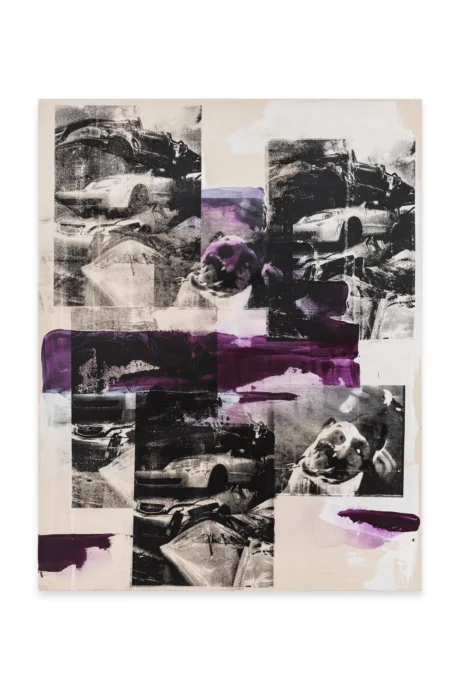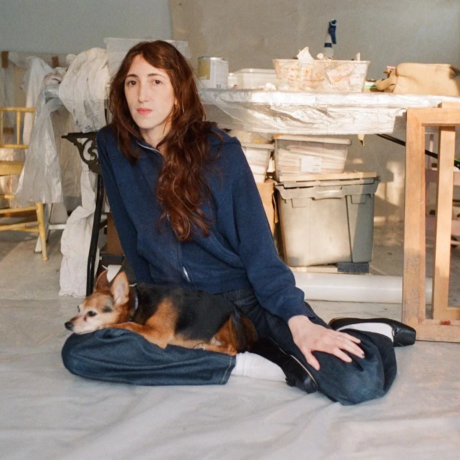Gabriella Angeleti walks readers through the new trio of exhibitions at the Inhotim Institute in Brazil.

The Inhotim Institute—a contemporary art museum and botanical garden in Brumadinho, Minas Gerais—opened its seasonal programming earlier this year with a trio of exhibitions that examine themes related to the African diaspora. The programming includes a long-term engagement with the Brazilian artist Paulo Nazareth titled Esconjuro (Conjuration) that honours the “bodies, people, spirits and lives that have passed and the ones still come,” the artist said at the premiere. It comprises a series of exhibitions and performances that will unfold over 18 months across the indoor and outdoor spaces of the 346-acre centre.
Nazareth opened his presentation to an extensive audience outside of the centre’s Galeria Praça with a performance evoking a ritual linked to Omolu, an orixá of the Afro-Brazilian religion Candomblé that symbolises healing and rejuvenation. Sometimes called a “popcorn bath,” it is one of several rituals in which participants are “bathed” with earthly manifestations of an orixá, and accompanied by singing and drumming. In the performance, Nazareth chanted and scattered handfuls of popcorn on the audience, with popcorn representing the “flowers of Omolu.”

Inside the Galeria Praça, Nazareth will have a monographic show that will be rotated three times in the duration of the exhibition. In the adjacent terrace, he has installed the newly-commissioned work Sambaki (2024) that uses bananas—a recurring motif in his work—as a departure point. A series of concrete bananas are stacked in a mound and flanked by wooden beams that are mounted with speakers resounding a conversation in Creole between immigrant workers from Guinea-Bissau, who were once his assistants in a similar project presented at the São Paulo Museum of Art (MASP) in 2012. On the walls, a series of wheat-pastings show Brazilian flags inscribed with the names of orixás.
“The banana talks about displacement,” Nazareth tells Elephant. “It talks about the African diaspora, the lives of the Indigenous people who lived here, and of course the Banana Republics, the coups of the past and recent centuries and the promises that we are seeing right now.” He adds that the title of the show stems from a word akin to magic. “When I talk about ‘conjuration,’ I’m talking about the verb and the noun. It’s a promise and it’s a commitment. I promise that the bananas planted here will spread across the land and continue to do so after we are gone.”
The exhibition is part of the first curatorial program spearheaded by Júlia Rebouças, the newly-appointed artistic director of the institution, alongside several other curators at the centre, including Douglas de Freitas, Beatriz Lemos, Marilia Loureiro, Deri Andrade and Lucas Menezes. One overarching focus of the programme was to expand how the centre engages with contemporary art and nature to tell pertinent stories about diasporic histories.
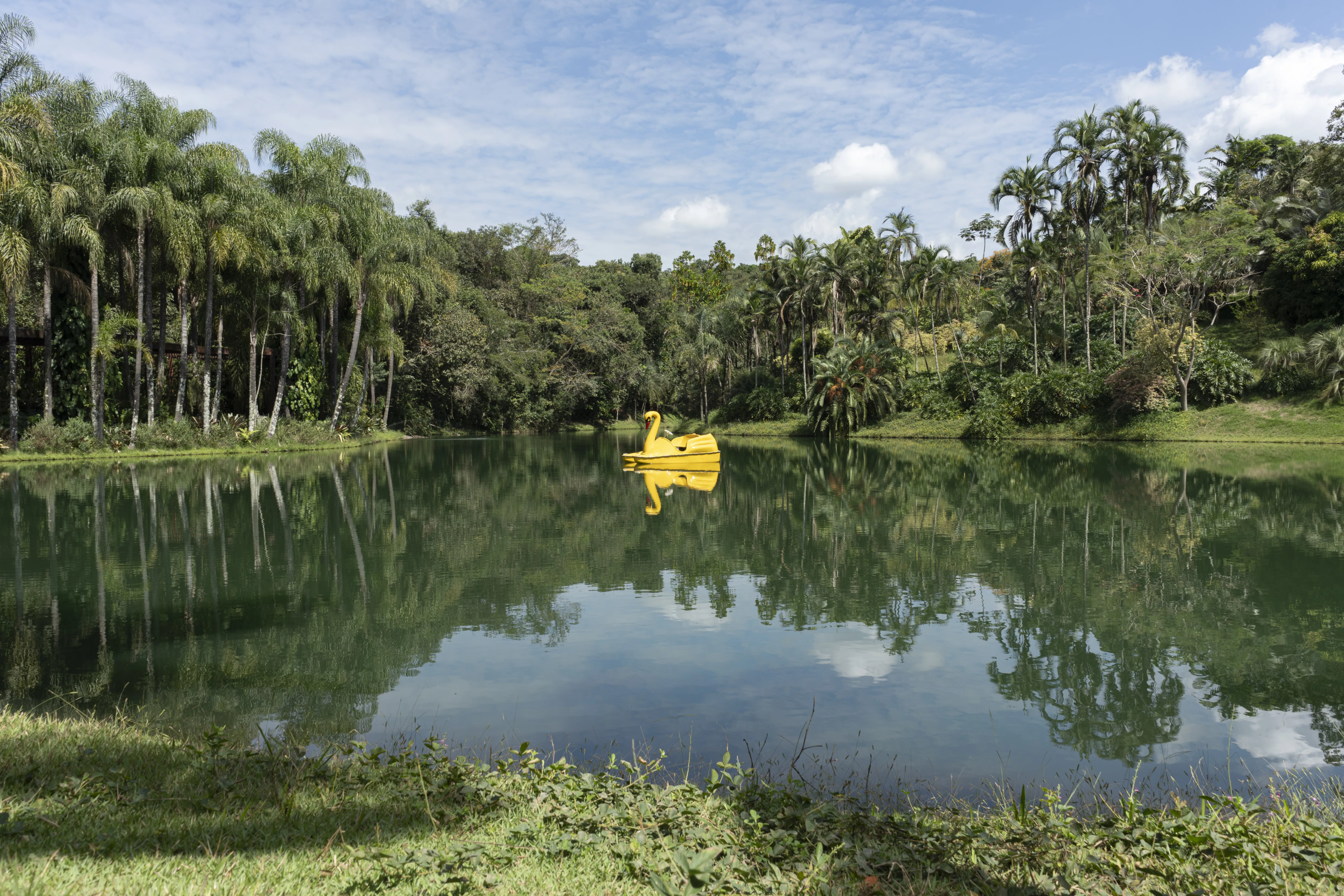
In addition, the 2024 roster includes an iteration of the acclaimed work O Barco / The Boat (2021) by the Portuguese artist and writer Grada Kilomba, which critiques the entanglement between European maritime expansion and the transatlantic slave trade. The work comprises 134 burnt wooden blocks that form the enclosed cargo space where enslaved Africans were quartered. Each block is engraved in gold with verses that are translated into Yoruba, Kimbundu, Cape Verdean Creole, Portuguese, English and Syrian Arabic.
The aforementioned work has traveled throughout the world before coming to Inhotim, premiering at the BoCA Biennial of Contemporary Arts de Lisboa in 2021. It was staged at the Museum of Art, Architecture and Technology in Lisbon in 2021; the Teatre Lliure of Barcelona and the Staatliche Kunsthalle Baden-Baden in Berlin in 2022; and Somerset House in London in 2022 as part of the programming of the 1-54 Contemporary African Art Fair.
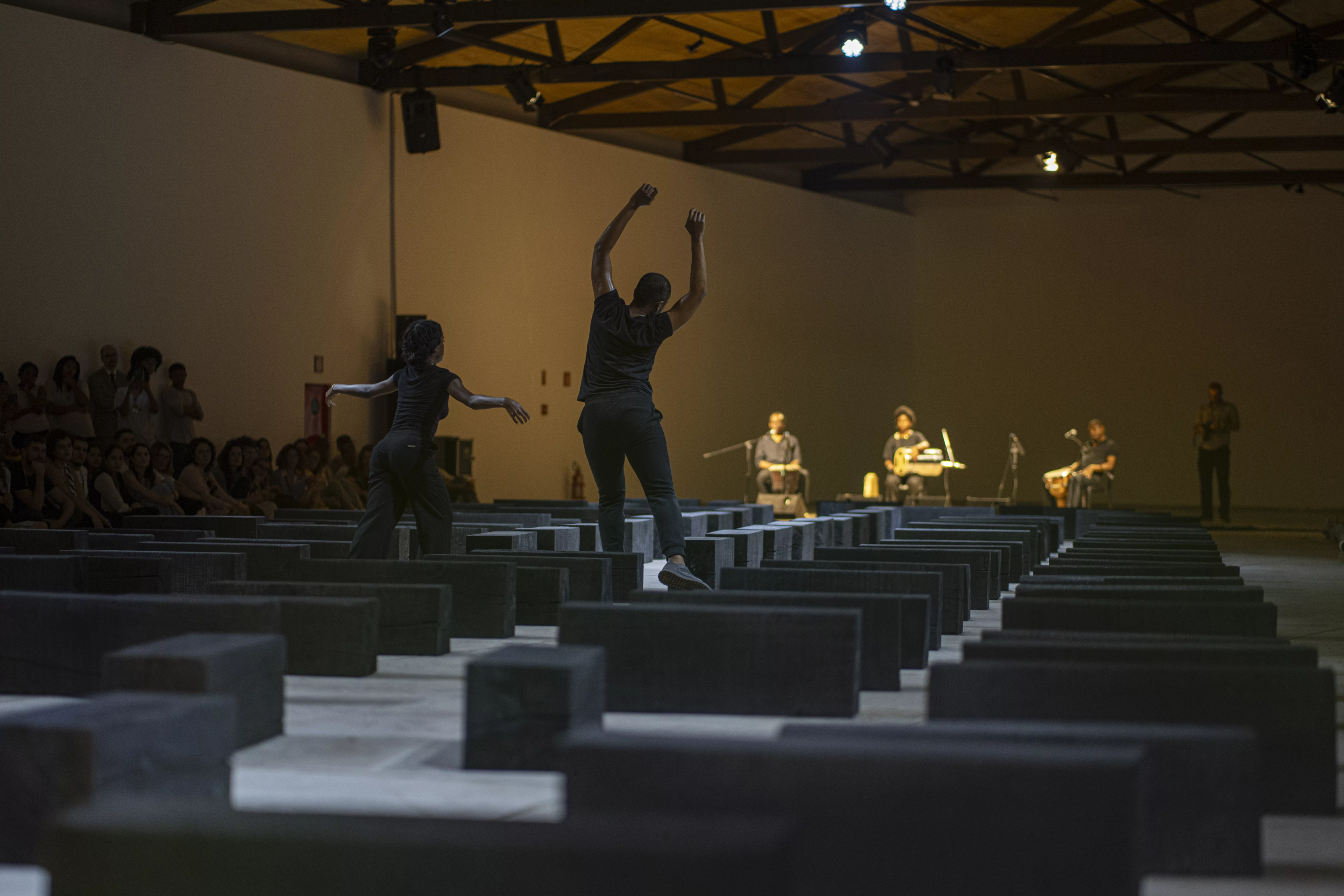
In each iteration, it has been accompanied by a series of performances with music composed by the Angolan musician and writer Kalaf Epalanga. The format has been slightly modified for the Inhotim presentation, where it is installed indoors for the first time at the cavernous Galeria Galpão. Kilomba has additionally partnered with Brazilian singers and percussionists, who will handle the second and third stagings of the performances over the summer.
Kilomba expressed that the work takes a significant pertinence in Brazil, where the collective trauma of colonialism, racism and social injustices are palpably traceable. The artist, who is based between Lisbon and Berlin, was the co-curator of the 35th Bienal de São Paulo last year, which explored similar subjects in its curatorial framework, and authored the emblematic book Plantation Memories: Episodes of Everyday Racism (2008) that broadly examines the Portuguese-speaking diaspora.
The blocks in O Barco / The Boat stretch across 32 metres, and viewers entering the work must lower their heads to read the poems inscribed in them, which reads words like: “A boat, a basement / A basement, a cargo.” The work becomes “a living object in itself,” Kilomba said in a press conference ahead of the inaugural performance earlier this year. “The scenography and architecture shows exactly how African people’s bodies were fitted in the vessel.”
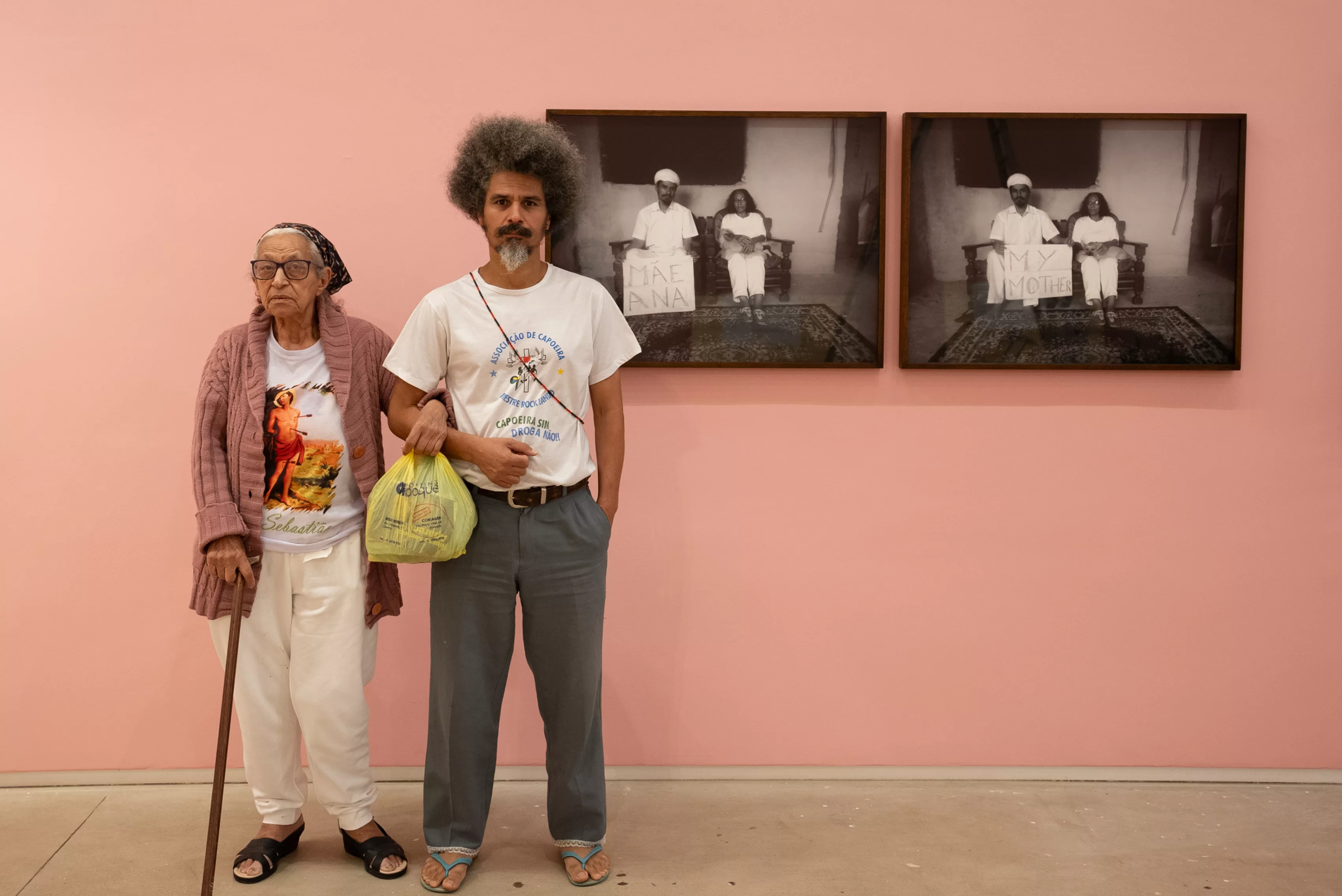
Elsewhere on the grounds, in the Galeria Lago, there is a group exhibition titled Essays on Landscape featuring show a dynamic selection of works by the artists Ana Cláudia Almeida, Castiel Vitorino Brasileiro, Zé Carlos Garcia and Aislan Pankararu. The artists each explore themes related to identity and nature through various mediums, with Almeida presenting abstract large-scale landscape paintings and Brasileiro showing a series of photographs anthropomorphising Afro-Brazilians and plants, showing some with flora appearing to spill out from their insides, while Garcia presents a series of intricately carved sculptures referencing weapons and organic elements of African and Indigenous origin. One particular highlight of the show is a series of paintings by Pankararu that reference the cosmology of the Pankararu people of Pernambuco. Audiences in New York can view more of Pankararu’s work in his exhibition titled Endless River, on view until June 22 at Salon 94.
Words by Gabriella Angeleti



